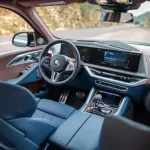When it comes to car interiors, color is more than just a visual aspect; it’s a powerful tool for setting the mood, expressing personality, and enhancing the overall driving experience.
Car manufacturers carefully select interior color palettes to create a harmonious and inviting space for both drivers and passengers.
In this article, we’ll explore the art of car interior color palettes, the psychology behind them, and how they contribute to the aesthetics and ambiance of your vehicle.
1. The Importance of Color
Color has a profound impact on our emotions and perceptions. In car interior design, color choices go beyond aesthetics; they influence how we feel while driving and can affect our overall satisfaction with the vehicle. Different colors evoke various emotions and associations, making them a crucial element in car design.
2. Classic Neutrals
Neutral colors like black, gray, and beige are timeless choices for car interiors. They exude sophistication, elegance, and versatility. Black interiors, in particular, are often associated with luxury and power. Gray and beige, on the other hand, provide a sense of calm and neutrality that appeals to a wide range of tastes.
**3. Modern Minimalism**
In recent years, minimalist car interiors have gained popularity, and color palettes have adapted accordingly. Shades of white, cream, and light gray dominate these interiors, creating a sense of simplicity, cleanliness, and modernity. These colors are often paired with sleek, high-tech features and materials.
**4. Bold Accents**
To add a touch of personality and excitement, car manufacturers often use bold accent colors as highlights. Red, blue, and yellow are common choices for accent stitching, trim, and seat belts. These vibrant colors create a sense of energy and can make the interior feel more dynamic.
**5. Earthy Tones**
Earthy tones like brown and olive green are becoming increasingly popular in car interior design. They evoke a connection to nature and a sense of warmth and comfort. These colors work well with natural materials like wood and leather, creating a cozy and inviting atmosphere.
**6. High-Contrast Designs**
Contrast is a key principle in interior design, and car interiors are no exception. Combining light and dark colors creates visual interest and can make certain elements, like controls and displays, stand out. For example, a light-colored dashboard against a dark interior can create a striking visual effect.
**7. Personalization Options**
Many car manufacturers now offer personalization options that allow buyers to choose their interior color palettes. This level of customization allows drivers to express their unique style and preferences. Whether it’s a two-tone leather interior or a choice of accent colors, personalization adds a personal touch.
**8. Psychological Impact**
Color psychology plays a significant role in car interior design. For instance, blue is often associated with calmness and trust, making it a popular choice for luxury cars. Red can stimulate excitement and energy, which may be desirable in sportier models. Understanding the psychological impact of color helps manufacturers create interiors that resonate with their target audience.
**9. Lighting Effects**
Interior lighting can transform the perception of color within a car. Ambient lighting, customizable in many modern vehicles, allows you to change the color of the interior at will. This dynamic feature enables drivers to create different moods and atmospheres.
**10. Future Trends**
As car interiors continue to evolve, so will color palettes. Future trends may incorporate more sustainable and eco-friendly materials, leading to new color options. Additionally, as autonomous driving becomes more prevalent, interiors may focus on creating relaxing and inviting atmospheres through color and lighting.
**Conclusion: The Artistry of Interior Colors**
The art of car interior color palettes is a delicate balance between aesthetics, psychology, and personalization. Whether you prefer the classic elegance of neutrals, the modern simplicity of minimalism, or the boldness of vibrant accents, your car’s color palette has a significant impact on your driving experience. It’s a testament to the careful thought and creativity that goes into every aspect of car design, ensuring that your time behind the wheel is not just functional but also visually and emotionally satisfying. The right color palette can truly elevate the artistry of car interiors.


